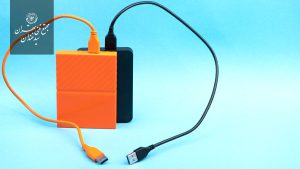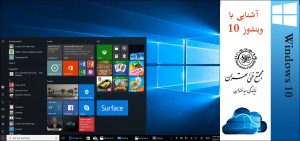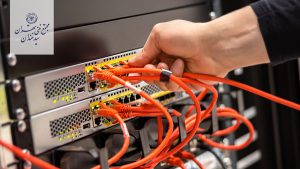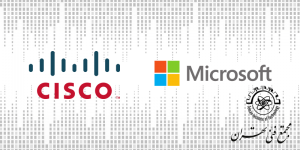دوره (CCNA(Routing & Switching برای متخصصان، مدیران و پشتیبانان شبکه تازه کار است تا توانایی نصب، تنظیم و عیب یابی روترها و سوییچ های سیسکو را بدست آورند.
با گذراندن این دوره تخصصی می توانید به صورت حرفه ای وارد بازار کار شوید.
سرفصل دوره آموزش CCNA 200-301
Network Principles Layer 2 Technologies Layer 3 Technologies VPN Technologies Infrastructure Security Infrastructure Services
- Network Fundamentals
- compare and contrast OSI and TCP/IP models
- compare and Contrast TCP and UDP protocols
- Describe the impact of Infrastructure components in an enterprise network
- a Firewall
- b Access points
- c Wireless controllers
- Describe the effects of cloud resources on enterprise network architecture
- a Traffic path to internal and external cloud services
- b Virtual services
- c Basic virtual network Infrastructure
- Compare and Contrast network topologies
- a star
- b Mesh
- c Hybrid
- Select the appropriate cabling type based on Implementation requirements
- Apply trounleshooting methodologies to resolve problems
- a perform and document fault isolation
- b Resolve or escalate
- c Verify and monitor resolution
- Configure, Verify, and troubleshoot IPv4 addressing and subnetting
- Compare and contrast IPv4 address types
- a Unicast
- b Broadcast
- c Multicast
- Describe the need for private IPv4 addressing
- Identify the appropriate IPv6 addressing Scheme to satisfy addressing requirements in a LAN/WAN enviroment
- Configure, verfiy, and troubleshoot IPv6 Stateless Address Auto Configuration
- Compare and contrast IPv6 address types
- a Global unicast
- b Unique local
- a Link local
- d Multicast
- e Modified EUI 64
- f Auto configuration
- g Anycast
- LAN Switching Technologies
- Describe and verify switching concepts
- a MAC learning and aging
- b Frame switching
- c Frame flooding
- d MAC address table
- Interpret Ethernet frame format
- Troubleshoot interface and cable issues (collisions, errors, duplex, speed)
- Configure, Verify, and truobleshoot VLANs (normal/extended range) spanning multiple switches
- a Access ports (data and voice)
- b Default VLAN
- Configure, verify, and troubleshoot interswitch connectivity
- a Trunk ports
- b Add and Remove VLANs on a trunk
- c DTP,VTP (v1&v2), and 802.1Q
- d Native VLAN
- Configure, Verify, and troubleshoot STP protocols
- a STP mode (PVST+ and RPVST+)
- b STP root bridge selection
- Configure, Verify and truoubleshoot STP related optional features
- a PortFast
- b BPDU guard
- Configure and verify layer 2 protocol
- a static
- b PAGP
- c LACP
- Describe the benefits of switch
- Describe and verify switching concepts
- Routing Technologie
- Describe the routing consepts
- a packet handling along the path through a network
- b forwarding desision based on route lookup
- c frame rewrite
- Interpret the components of a routing table
- a Prefix
- b Network mask
- c Next hop
- d Routing protocol code
- e Administrative distance
- f Metric
- g Gateway of last resort
- Describe how a routing table in populated by different routing information sources
- a Admin distance
- Configure. verify, and troubleshoot inter VLAN routing
- a Router on a stick
- Compare and contrast static routing and dynamic routing
- Compare and contrast distance vector and link state routing protocols
- Compare and contrast Interior and exterior routing protocols
- Configure, Verify, and troubleshoot IPv4
- a Default route
- b Network route
- c Host route
- d Floating static
- Configure, verify, and troubleshoot single area and multi-area OSPFv2 for IPv4 (redistribution, stub, virtuallink)
- Configure, verify, and troubleshoot RIPv2 for IPv4 (excluding authentication, filtering, manual summarization, redistribution)
- troubleshoot basic layer 3 end-to-end connectivity Issues
- Describe the routing consepts
- WAN Technologies
- Configure and verify PPP and MLPPP on WLAN Interfaces using local authentication
- Configure, verify, and troubleshoot PPPoE client-side Interfaces using local authentication
- Configure, verify, and troubleshoot GRE tunnel connectivity
- Describe WAN topology options
- a Point-to-point
- b Hub and Spoke
- c Full mesh
- d Single vs dual-homed
- Describe WAN access connectivity options
- a point-to-point
- b Hub and Spoke
- c Full mesh
- d Single vs dual-homed
- Desctibe WAN access connectivity options
- c Broadband PPPoE
- d Internet VPN (DMVPN, site-to-site VPN, Client VPN)
- Configure and verify Single-homed branch connectivity using eBGP IPv4 (limited to peering and route advertisement using Network command only)
- Describe basic QoS consepts
- a Marketing
- b Device trust
- c Prioritization
- c. (l) Voice
- c. (ll) Video
- c. (lll) Data
- d Shaping
- e Policing
- f Congestion management
- Infrastructure Services
- Describe DNS lookup operation
- Troubleshoot client connectivity issues Involing DNS
- Configure and verify DHCP on a router( excluding static reservations)
- a server
- b Relay
- c Client
- d TFTP, DNS, and Gateway options
- Troubleshoot client-and router-based DHCP connectivity issues
- Configure, verify, and troubleshoot basic HSRP
- a Priority
- b Preemption
- c Version
- Configure, verify, and troubleshoot inside source NAT
- a Static
- b Pool
- C PAT
- Configure and verfiy NTP operating in a client/server mode
- Infrastructure Security
- Configure, verify, and troubleshoot port security
- a Static
- b Dynamic
- c Sticky
- d MAX MAC addresses
- e Violation actions
- f Err-disable recovery
- a 802.1x
- c Nonderfault Native VLAN
- Configure, verify, and troubleshoot IPv4
- IPv6 access list for traffic filtering
- a Standard
- b Extended
- c Named
- Verify ACLs using the APIC-EM Path Trace ACL Analysis tool
- Configure, verify, and troubleshoot basic device hardening
- a Local authentication
- b Source password
- c Access to device
- c. (l) Source address
- c. (l) Telnet/SSH
- d Login banner
- Configure, verify, and troubleshoot port security
پیش نیاز دوره آموزش CCNA 200-301
+Networkلیست ارائه های دوره CCNA 200-301
| ردیف | عنوان دوره | روزهای تشکیل | تاریخ شروع | تعداد ساعت | شهریه (ریال) | توضیح | پیش نیاز | |
|---|---|---|---|---|---|---|---|---|







سلام ببخشید مدرس این دوره چه کسی هستند؟
سلام خدمت شما
استاد این دوره هنوز مشخص نشده. معمولاً یکی دو روز قبل شروع کلاس مشخص میشه. فقط یک نکته دیگه اینکه این هفته شروع قطعی کلاسه، اگر تمایل به شرکت در دوره را دارید زودتر اقدام کنید.